
The monks and nuns of the Buddhists, here noticed by M. Creuzer, take the three cardinal vows of poverty, chastity, and obedience,-the same as the monks and nuns of the European Christians. This singular fact at once proves the identity of the orders in the two communities, and that they must have had a common origin. I know not any circumstance of consequence in their economy in which they differ."

The Black Buddhist had Priest and Nuns. When you compare them to Buddhist Priest today Nichiren Shoshu operates like the Brahmins in Ancient India who have a corporation a sacerdotal aristocracy possessing great privileges. The Black Buddhist Priest and nuns of ancient India took vows of poverty, chastity and obedience. In America you cannot have a conversation with our Priest or Japanese SGI leaders. When you study Buddhist history in India the Buddhist were not like the Japanese. The Japanese Buddhist teachers in America are a lot like the racist Brahmins of India, they have a funky altitude.


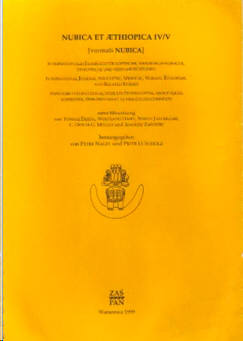

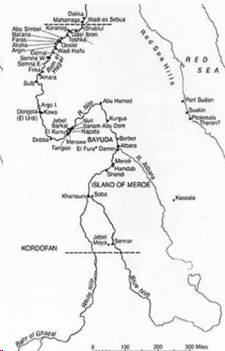
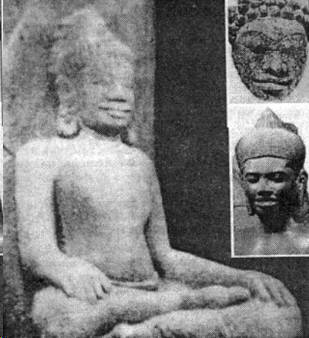

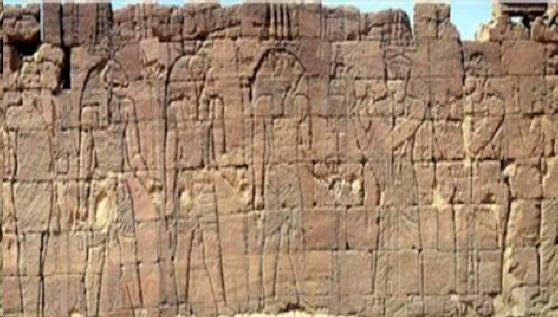
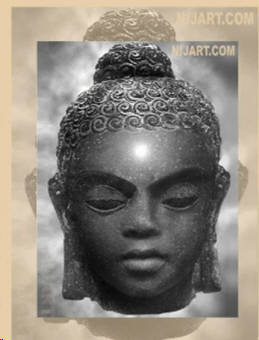
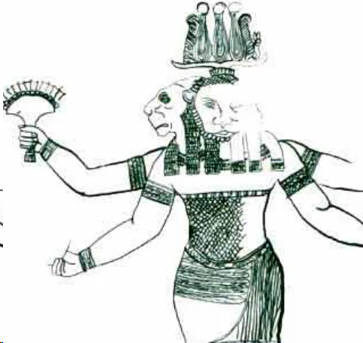


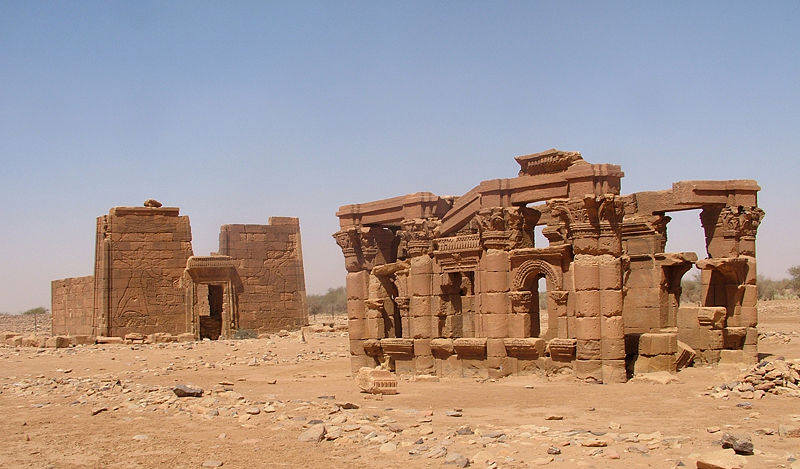
Thundy maintains that archaeological evidence exist for a community of Indian sages living in Memphis as early as 200 BC (p.243). We know that decendents of these missionaries were still in Egypt over two hundred years later because they were visited by Apollonius of Tyana. Asoka used Kharosthi to write his edits. The Buddhist also used this writing system to record their scriptures. This means that the Gymnosophists would have had a long tradition of employing Kharosthi to communicate their ideas. The Gymnosophists were probably well respected by the Meroites and some Meroites probably had knowledge of Buddhist teachings and literacy.
Some Meroites may have played an important role in Buddhist because Blemmyae, a prominent group in the Meroitic Sudan are mentioned in Pali text Tipitaka (see:JDM Derrett, (2002) A Blemmya in India, Numen 49:460-474). Dr.Derrett wrote that in early Pali text " we have a Blemmya (an African) in front rank Buddhist texts of very respectable age (p.465). The Buddhist text where Blemmya were mentioned are very old. The Vinaya pitaka, is dated to the 4th century B.C.E.
If Blemmya (Nubians) are mentioned in Buddhists text we can be sure that Meroites were not ignorant of Kharosthi. This would explain why many of the Meroitic symbols agree with Kharosthi. They agree because some Meroites were probably already literate in Kharosthi due to the influence of Buddhism in the Meroitic Empire.
.

Clyde Winters Ph.D, is Director of the Uthman dan Fodio Institute. Dr. Winters is the author of numerous articles and books on anthropology, linguistics and archaeogenetics. His most recent book is Brain Based Learning and Special Education . Presently, he is working on archaeogenetics of Indian and African civilizations and people.
Carved in stone at the Apedemak Temple in Nubia Africa is this three headed Lion that correstpond to the Asoka Buddhist edit that we find in India.
They found these Gold Asokan coins in a cave in Ethiopia. Buddhism was practiced in the Askum Ethiopian Empire of the Queen of Sheba. In fact there were two Ethiopia's one East of the Red Sea and one West of the Red Sea. We learn this in the Analacypsis by Godfrey Higgins. Also learn of the Ethiopia from ancient Ethiopian writings.
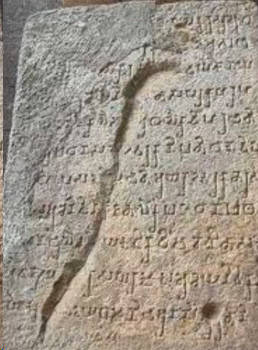
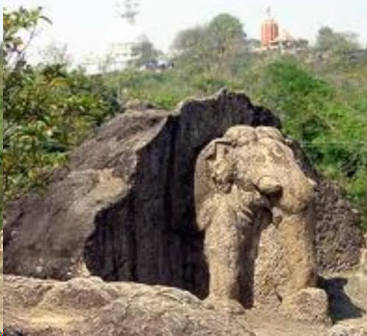
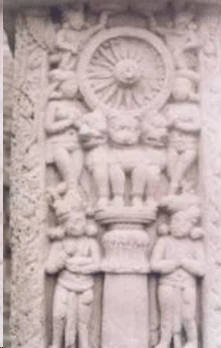
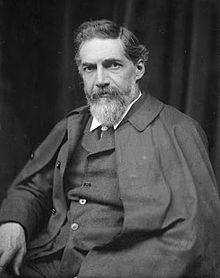
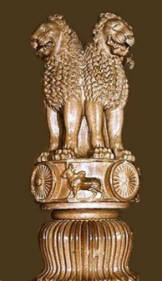


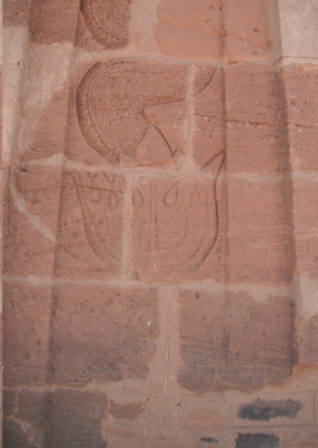

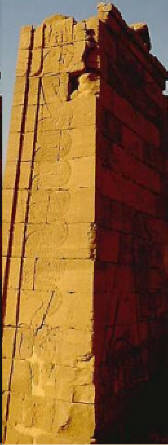

Dr. Clyde Withers writes this about the Naga people :
Ethiopians have had very intimate relations with Indians. In fact, in antiquity the Ethiopians ruled much of India. These Ethiopians were called the Naga. It was the Naga who created Sanskrit. A reading of ancient Dravidian literature which dates back to 500 BC, gives us considerable information on the Naga. In Indian tradition the Naga won central India from the Villavar (bowmen) and Minavar (fishermen).
The Naga were great seamen who ruled much of India, Sri Lanka and Burma. To the Aryans they described as half man and snake. The Tamil knew them as warlike people who used the bow and noose. The earliest mention of the Naga, appear in the Ramayana , they are also mentioned in the Mahabharata. In the Mahabharata we discover that the Naga had the capital city in the Dekkan, and other cities spread between the Jumna and Ganges as early as 1300 BC. The Dravidian classic, the Chilappathikaran made it clear that the first great kingdom of India was Naganadu.
The Naga probably came from Kush-Punt/Ethiopia. The Puntites were the greatest sailors of the ancient world. In the Egyptian inscriptions there is mention of the Puntite ports of Outculit, Hamesu and Tekaru, which corresponds to Adulis, Hamasen and Tigre.
In Sumerian text, it is claimed that the Puntites traded with the people of the Indus Valley or Dilmun. According to S.N. Kramer in The Sumerians, part of Punt was probably called Meluhha, and Dilmun was probably the ancient name of the Indus Valley. (Today some scholars maintain that Oman, where we find no ancient cities was Dilmun and the Indus Valley may have been Meluhha).
Ancient Ethiopian traditions support the rule of Puntites or Ethiopians of India. In the Kebra Nagast, we find mention of the Arwe kings who ruled India. The founder of the dynasty was Za Besi Angabo. This dynasty according to the Kebra Nagast began around 1370 BC. These rulers of India and Ethiopia were called Nagas. The Kebra Nagast claims that ” Queen Makeda “had servants and merchants; they traded for her at sea and on land in the Indies and Aswan”. It also says that her son Ebna Hakim or Menelik I, made a campaign in the Indian Sea; the king of India made gifts and donations and prostrated himself before him”. It is also said that Menalik ruled an empire that extended from the rivers of Egypt (Blue Nile) to the west and from the south Shoa to eastern India”, according to the Kebra Nagast. The Kebra Nagast identification of an eastern Indian empre ruled by the Naga, corresponds to the Naga colonies in the Dekkan, and on the East coast between the Kaviri and Vaigai rivers.
The presence of Meluhhaites/ Puntites in India may expain the Greek tradition of Kusites ruling India up to the Ganges. It would also explain the Aryan traditions of Mlechchas ( Sanskrit name for some of the non-Aryan people) as one of the aboriginal groups of India. Many scholars associate the name Mlechchas with Meluhha.
The major Naga tribes were the Maravar, Eyinar, Oliyar, Oviyar, Aru-Valur and Parathavar. The Nagas resisted the invansion of the Cholas. In the Kalittokai IV,1-5, the Naga are described as being “of strong limbs and hardy frames and fierce looking tigers wearing long and curled locks of hair.” The Naga kings of Sri Lanka are mentioned in the: Mahawanso, and are said to have later become Dravidians, as testified to by the names of these people: Naganathan, Nagaratnam, Nagaraja and etc.
The major gift of the Naga to India was the writing system: Nagari. Nagari is the name for the Sanskrit script. Over a hundred years ago Sir William Jones, pointed out that the ancient Ethiopic and Sanskrit writing are one and the same.
William Jones, explained that the Ethiopian origin of Sanskrit was supported by the fact that both writing systems the writing went from left to right and the vowels were annexed to the consonants. Today Eurocentric scholars teach that Indians taught writing to the Ethiopians, yet the name Nagari for Sanskrit betrays the Ethiopia origin of this form of writing. Moreover, it is interesting to note that Sanskrit vowels: a,aa,’,I,u,e,o, virama etc., are in the same order as Geez.
The Ethiopian script has influenced many other writing systems. Y.M. Kobishnor, in the Unesco History of Africa, maintains that Ethiopic was used as the model for Armenian writing, as was many of the Transcaucasian scripts. Dravidian literature indicate that the Naga may have introduced worship of Kali, the Serpent, Murugan and the Sun or Krishna. It is interesting to note that a god called Murugan is worshipped by many people in East Africa.
It is interesting that Krishna, who was associated with the Sun, means Black, this is analogous to the meaning of Khons of the Kushites. Homer, described Hercules as follows: “Black he stood as night his bow uncased, his arrow string for flight”. This mention of arrows identifies the Kushites as warriors who used the bow, a common weapon of the Kushites and the Naga.
When you study Black history you learn about the Ancient Nubians. In the Bible they are called "Cush" or Kushites. When you learn African/American Buddhist history you learn that the "Nubians" and the "Naga" people in India are one and the same people. You also learned from my lecture that the Buddhist in Ancient Africa were called Gymnosophist. We learned that Buddhist or Gymnosophist were in Sudan or Meroe the ancient capital of the Nubians. The Apedemak capital was in the city of "Naga" in Sudan. Buddhist scholars introduced Buddhism to Africa. Buddhist came before and after King Asoka sent missionaries to Meroe. We know that the Buddhist language of Kharosthi was spoken and influenced the Meroe writing language system. Clearly the "Lotus Flower" etched in stone at the Apedemak Temple proves the Buddhist influence and relationship in Africa.
If you learn a clear and accurate understanding of the history of Buddhism you will learn that Buddhist history is also African/American history or Black history. Japanese wrote Black people out of Buddhist history. Nichiren Daishonin who we call the "True Buddha" was a scholar who studied and understood Buddhism. Nichiren Daishonin answered question asked by his disciples in letters, some were long and indept. The Japanese teachers in America do not follow the spirit of Nichiren Daishonin in answer questions. We find in America a spirit of "Japanese Racism." We fight Japanese superiority thinking. Over 10 year ago in 2003 I was at the Nichiren Shoshu Temple at Taisekiji Japan. Tony an African/American Buddhist leader in New York commented to me regarding the "Proud Black Buddhist" Website; "if information do not come from the Priest its not real." It is a misnomer and backward thinking to believe that Nichiren Shoshu Priest have a monopoly on Truth.